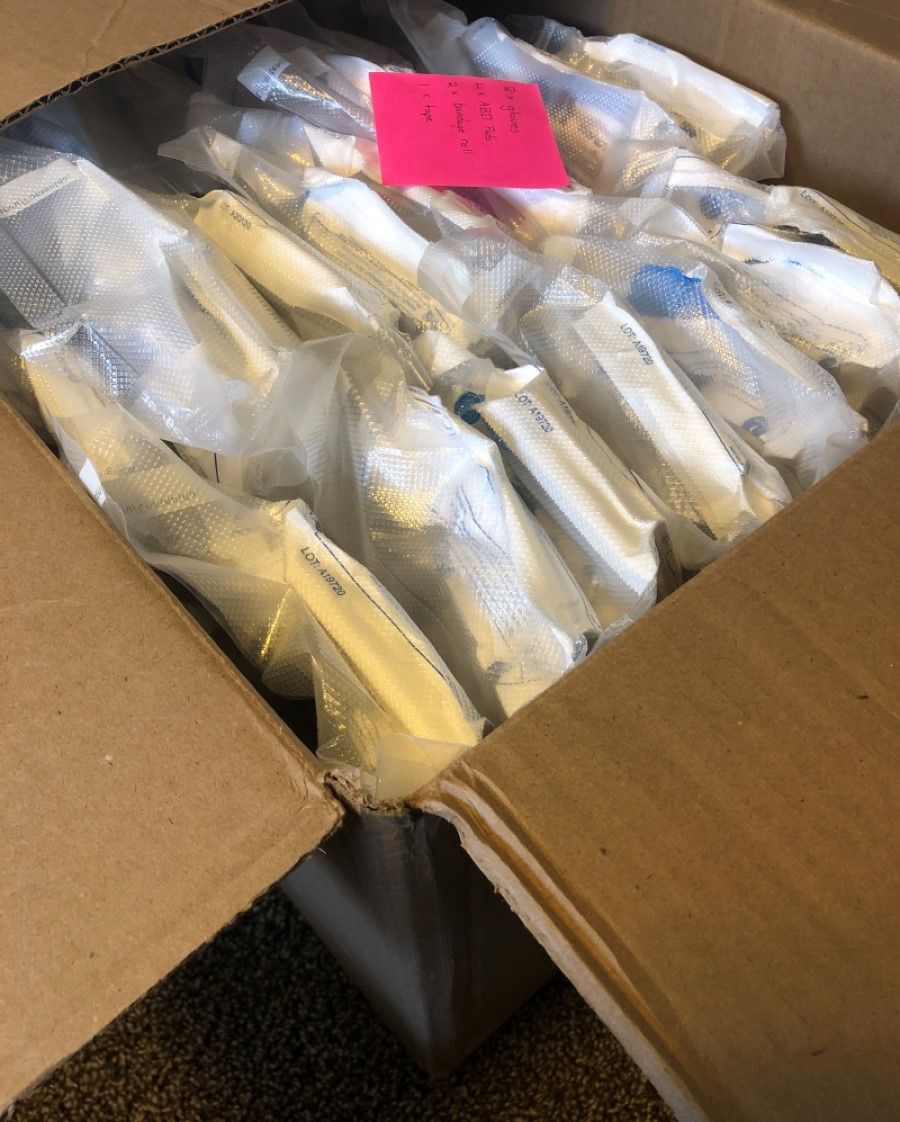Bleeding Control Kits
The Puget Sound SRA chapter wanted to put together some bleeding control kits to hand out to members, with an eye to doing so cheaply. The bill of materials below will make 50 kits, at a cost of between $3 and $4 each depending on the exact prices you're able to find.
The Puget Sound SRA chapter wanted to put together some bleeding control kits to hand out to members, with an eye to doing so cheaply. The bill of materials below will make 50 kits, at a cost of between $3 and $4 each depending on the exact prices you're able to find.
One note: you'll need to buy or borrow a vacuum sealer. We used the FoodSaver FM2100, which is around $125. If you only ever use it for 50 kits, the price per kit will be closer to $6 or $7, but don't do that - borrow and share.
| Item | Cost Ea. | Quantity | Cost Total |
|---|---|---|---|
| 8" x 20' Vacuum-Seal Roll, 3 Pack | $21.74 | 1 | $21.74 |
| Dukal Sterile Combine ABD Pad 5" x 9", Box of 25 | $4.27 | 8 | $34.16 |
| Dukal Cotton Gauze Bandage Roll 4"x4yds 6 Ply Sterile, Case of 100 | $71.98 | 1 | $71.98 |
| 3M Durapore Hypoallergenic Surgical Tape, Box of 24 | $12.25 | 2 | $25.50 |
| 3M Durapore Hypoallergenic Surgical Tape, Single | $0.55 | 2 | $1.10 |
| CAREPLUS Nitrile Exam Gloves (box of 100, size L) | $13.00 | 1 | $13.00 |
| Subtotal | $167.48 | ||
Once you've got the materials on hand, you're in for a nice evening with some podcasts or an audiobook vacuum sealing the kits together. Each kit should contain:
- 1 pair of nitrile gloves
- 4 ABD pads
- 2 bandage rolls
- 1 roll of cloth tape
Once you've sealed everything in, carefully make a pair of small cuts on the sides of the vacuum plastic to help tear open the kits in a hurry. Make the cuts on the side of the kit that has the excess vacuum seal material, but make sure not to cut into the actual sealed part of the bag itself.

These kits are not entirely complete, and should be finished with a CAT tourniquet. If you pay attention, you can get them for $20-25 on sale at somewhere like North American Rescue or Chinook Medical.
Do not buy tourniquets, or any critical medical supplies, on Amazon. There have been incidents with knockoff tourniquets that break when used. Life-saving medical gear is not the place to try to save a few dollars by taking risks with your life or the lives of others.
When we distributed these kits, we included a flyer. These can be printed 4 to a page on thick paper (we used 80lb weight but haven't experimented with others).

For a ready-to-print version, you can snag the PDF below.
The cool trick is to put the flyer inside the vacuum sealed bag.

The finished kits are fairly small, and at $3-4 each, economical to make in bulk and hand out to those who might need them. Though they don't contain a tourniquet, they have everything a single rescuer would need to control major hemorrhage using direct pressure.

Note that these kits are only half the equation - you need training! Stop the Bleed offers classes, which you can find at https://www.stopthebleed.org/training/find-a-course.
In the meantime, or if you don't have courses nearby, Seattle's Office of Emergency Management has some great overview videos which cover the basics of bleeding control.
The free online version of Stop the Bleed offered by First CARE Provider is also a great choice.

Congratulations - you just learned everything you need to know to build and distribute bleeding control kits and help people find training in their use! Get out there and do some good.
